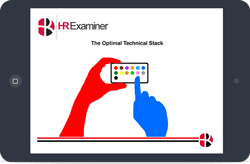Narrative Visualization in HR
“A story is data with a soul”
One of the keys to the successful use of insights derived from big data is the visualization of that data. To say that the science is primitive is to overstate the progress we’ve made. Still, the only way to consume big data is through visuals.
You’ve undoubtedly seen the Autodesk dynamic org chart. Take a look at all the research. Fundamentally, it’s a parlor trick; unfit for systematic analysis. Like most complex visualizations, it is novel and useless.
The newspaper industry, particularly the Guardian in the UK and the New York Times in the US, are pioneering the delivery of complex data as a story. In those cases, there is a beginning, middle and end to every story. The data may be big but it’s finite. Conventional plot arcs and interactivity are not great tools for business visualization.
But, you have to start somewhere.
Narrative visualization (9 syllables that mean story telling), is the discipline of discovering and communicating the fundamental story. In business (and in HR) you have to have the story so that there’s a framework for decision making. Business visualizations (graphic and narrative both) have beginnings, middles and dynamic decision points. The story is never finished. It’s just punctuated and rerouted with each successive decision.
Where you begin is with the story. No visualization is interesting if it isn’t used to convey the circumstances in which the decision must be made. That story has to be understood before you can represent it visually. That’s where the data journalists get it right. Visualization helps you tell the story you already have; or, it helps create a framework in which people can investigate that story.











